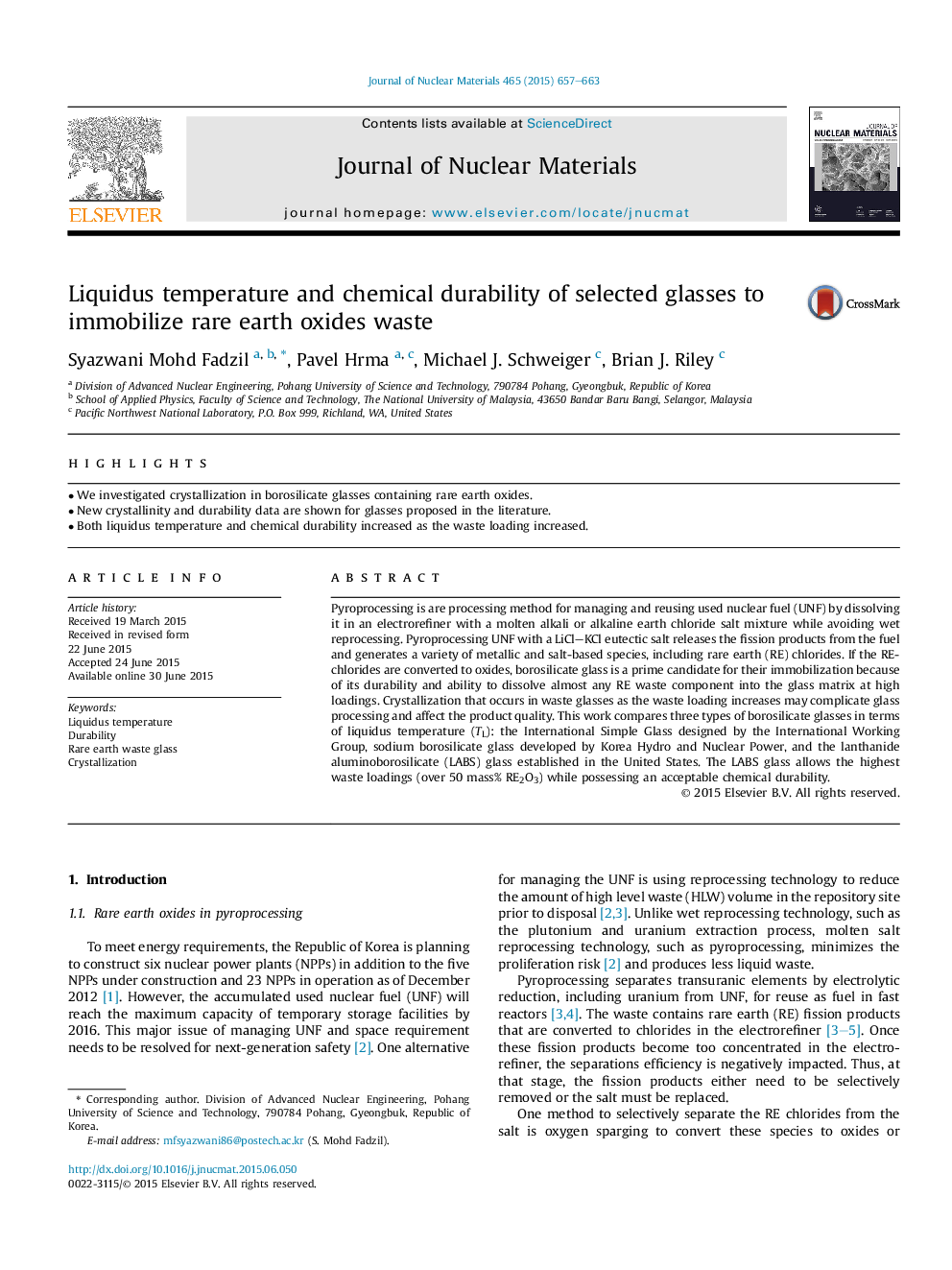| Article ID | Journal | Published Year | Pages | File Type |
|---|---|---|---|---|
| 7965534 | Journal of Nuclear Materials | 2015 | 7 Pages |
Abstract
Pyroprocessing is are processing method for managing and reusing used nuclear fuel (UNF) by dissolving it in an electrorefiner with a molten alkali or alkaline earth chloride salt mixture while avoiding wet reprocessing. Pyroprocessing UNF with a LiCl-KCl eutectic salt releases the fission products from the fuel and generates a variety of metallic and salt-based species, including rare earth (RE) chlorides. If the RE-chlorides are converted to oxides, borosilicate glass is a prime candidate for their immobilization because of its durability and ability to dissolve almost any RE waste component into the glass matrix at high loadings. Crystallization that occurs in waste glasses as the waste loading increases may complicate glass processing and affect the product quality. This work compares three types of borosilicate glasses in terms of liquidus temperature (TL): the International Simple Glass designed by the International Working Group, sodium borosilicate glass developed by Korea Hydro and Nuclear Power, and the lanthanide aluminoborosilicate (LABS) glass established in the United States. The LABS glass allows the highest waste loadings (over 50 mass% RE2O3) while possessing an acceptable chemical durability.
Related Topics
Physical Sciences and Engineering
Energy
Nuclear Energy and Engineering
Authors
Syazwani Mohd Fadzil, Pavel Hrma, Michael J. Schweiger, Brian J. Riley,
